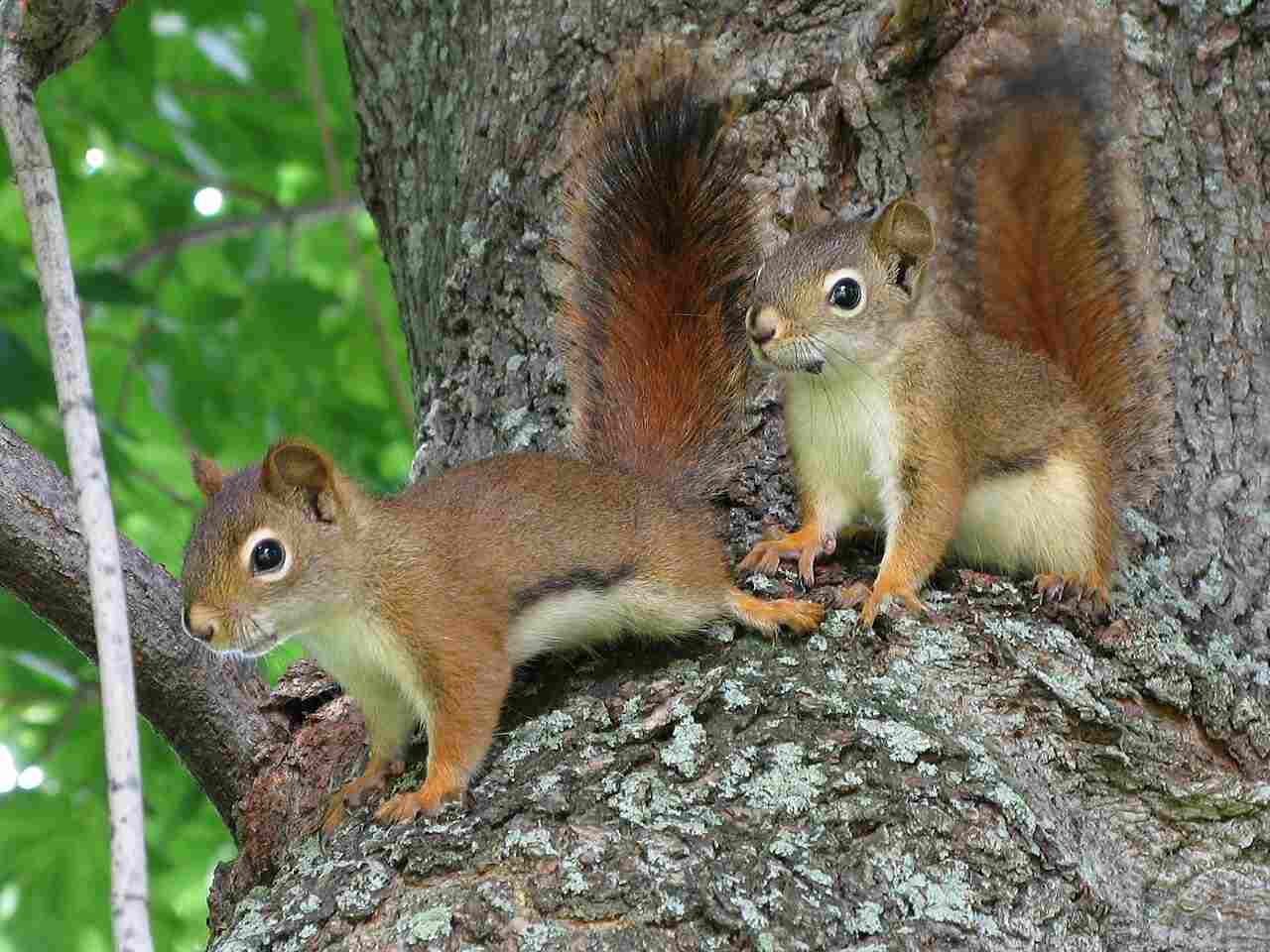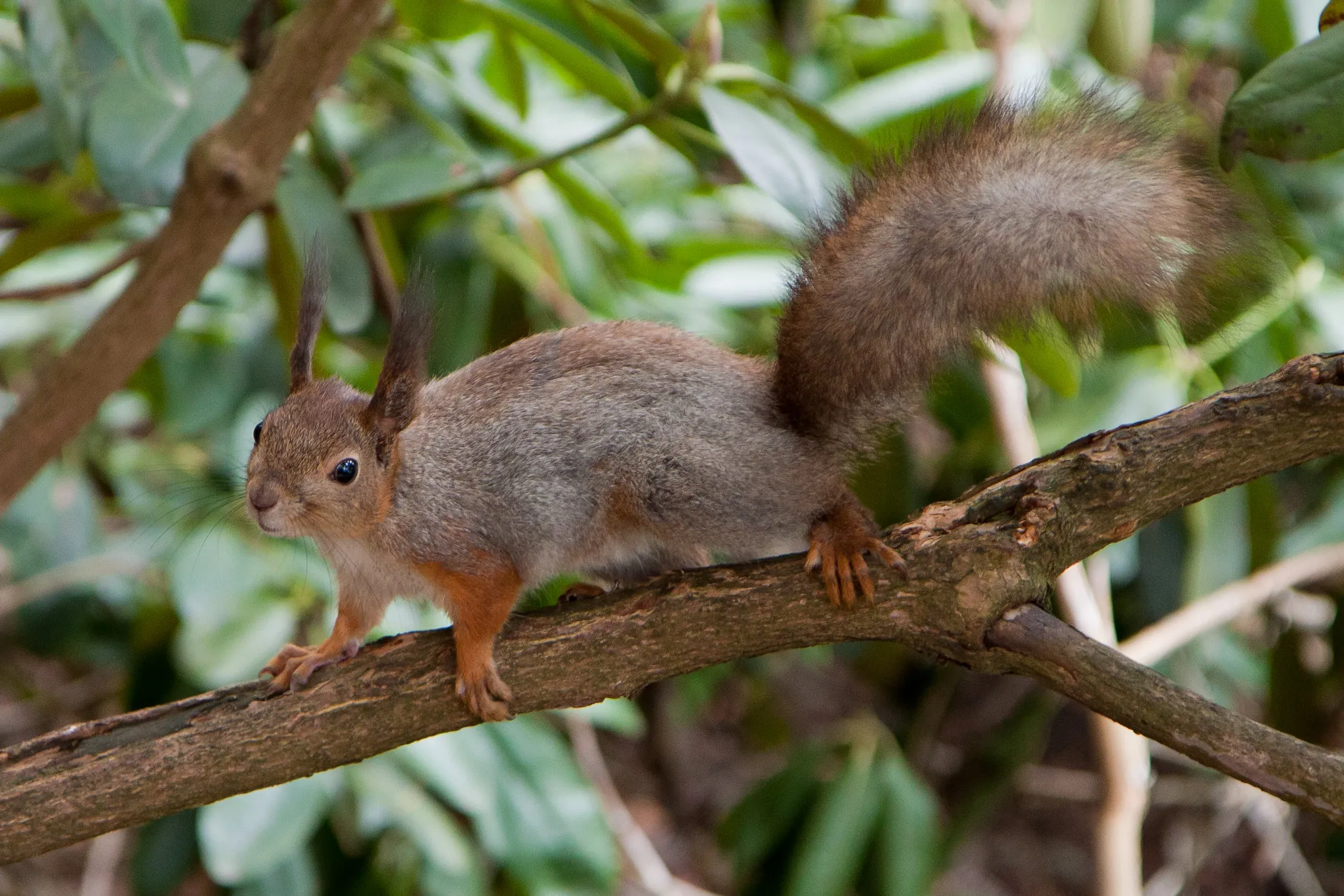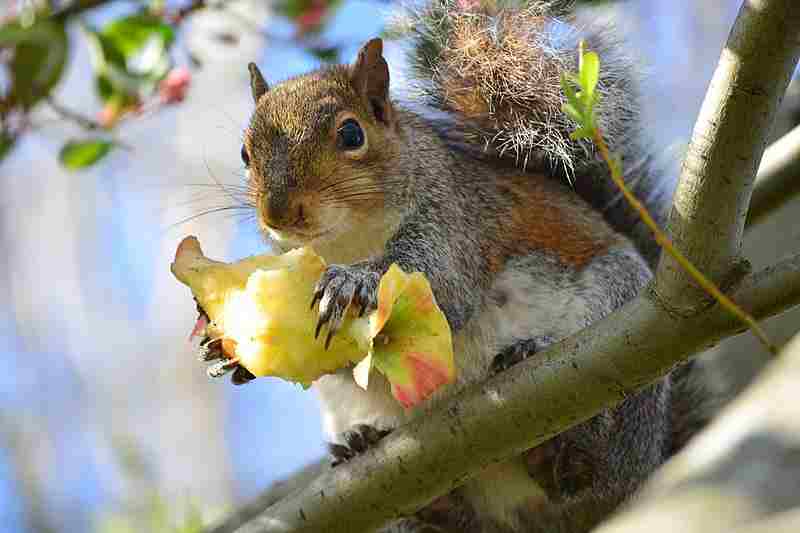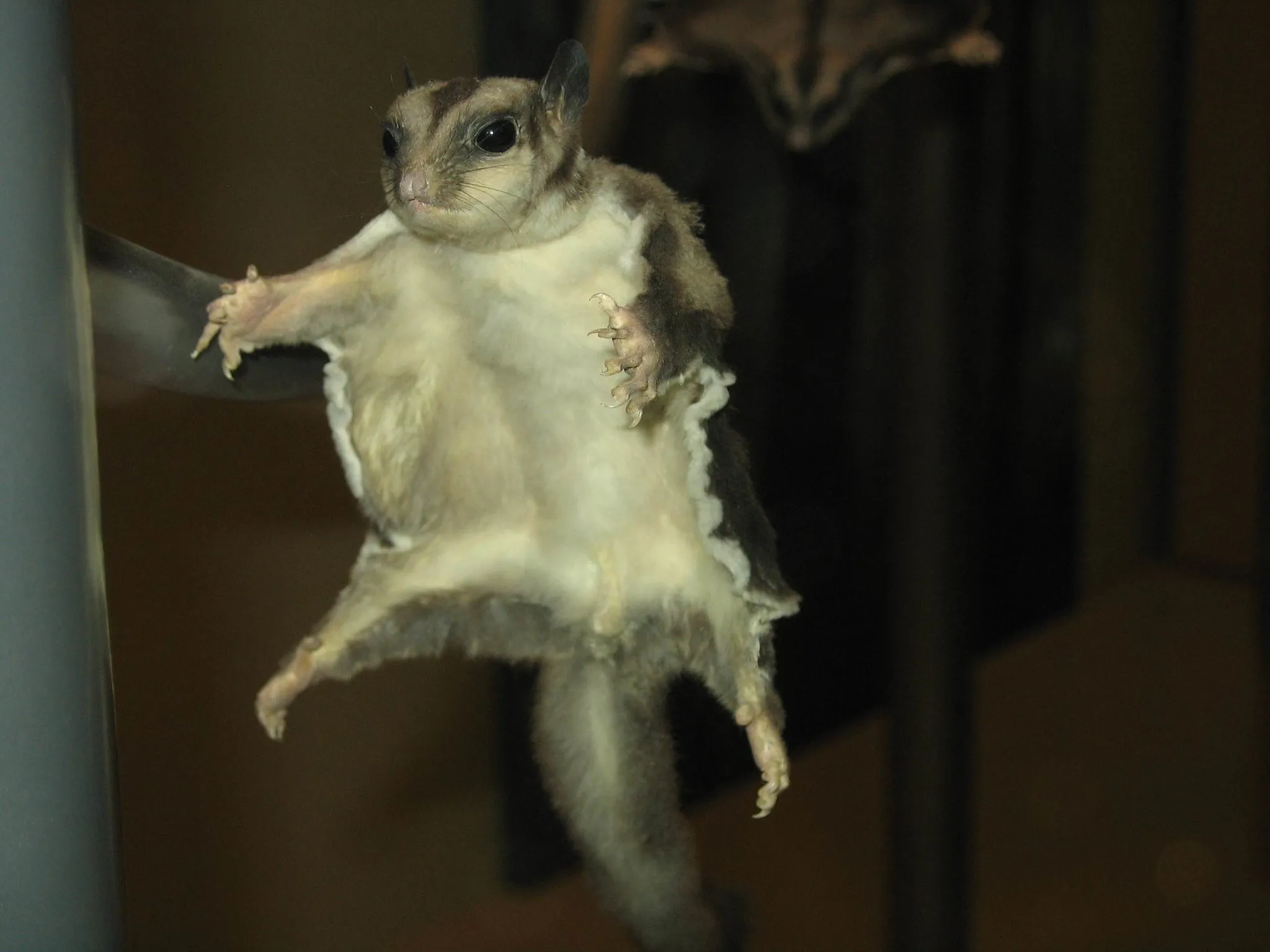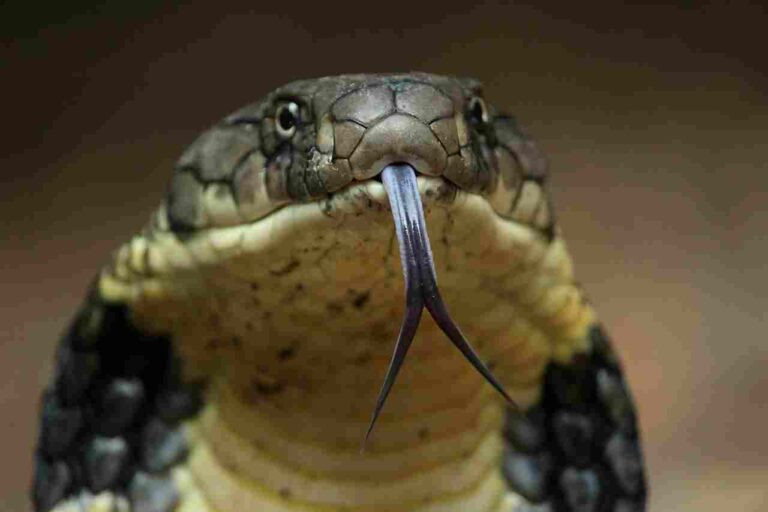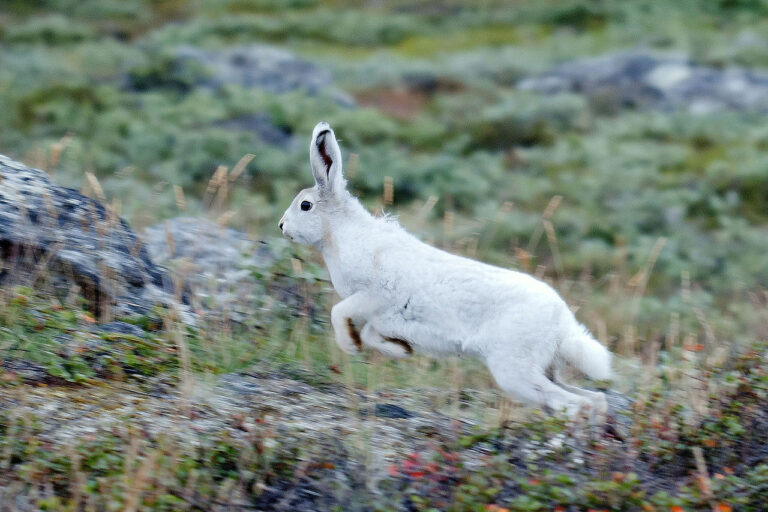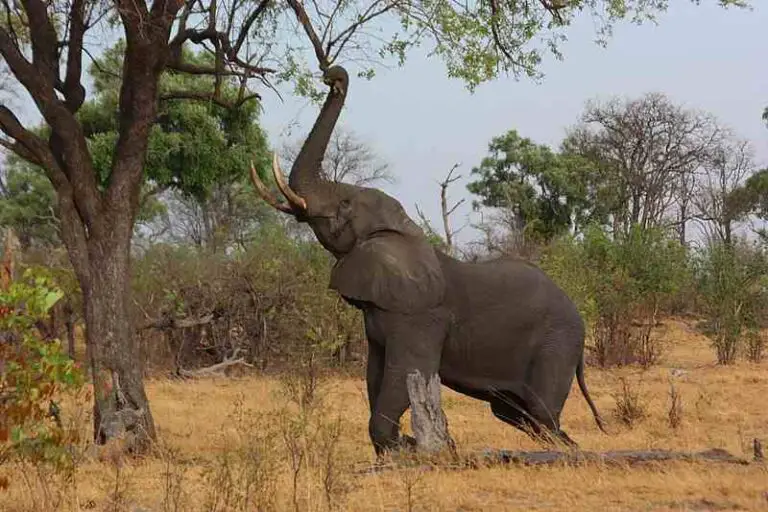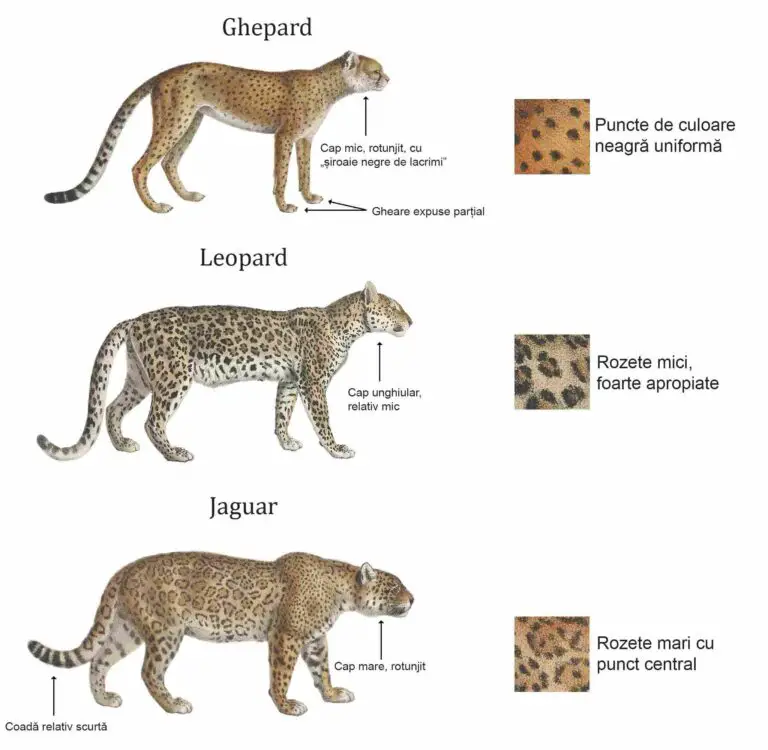Sugar Glider Vs Flying Squirrel Pet Suitability, Overall Comparison
Within the realm of gliding mammals, sugar gliders and flying squirrels captivate with their aerial abilities. This exploration illuminates the distinctions between sugar gliders and flying squirrels, unveiling the nuances that set these remarkable creatures apart.
I. Classification and Size Differences:
– Sugar gliders, as marsupial mammals, stand in contrast to flying squirrels, which belong to the placental mammals. Beyond classification, significant size differences contribute to their distinct appearances.
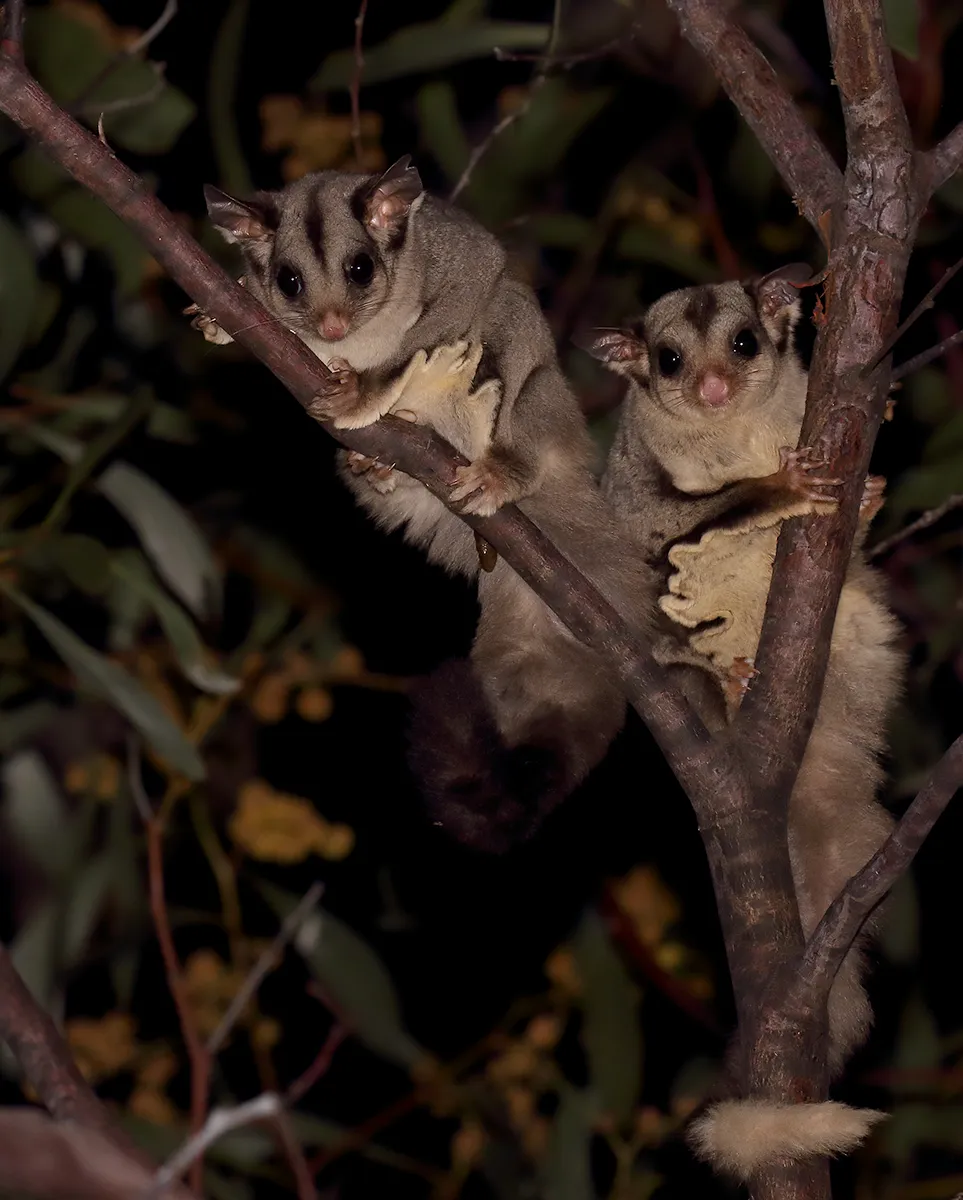
II. Preferred Locations and Habitats:
– Delving into the habitats preferred by sugar gliders and flying squirrels sheds light on their ecological niches. Understanding their environmental requirements enriches our comprehension of their lifestyles.
III. Convergent Evolution:
– Exploring the concept of convergent evolution brings to light the intriguing similarities shared by these gliding mammals. Despite different genetic classifications, sugar gliders and flying squirrels exhibit convergent features.
IV. Behavioral Differences:
– Sugar gliders showcase more nervous tendencies with personality fluctuations, while flying squirrels exude a more relaxed and confident demeanor. Understanding their behaviors contributes to insights into their roles in the wild.
V. Pet Ownership Considerations:
– Recognizing the distinctive needs of sugar gliders and flying squirrels as pets allows prospective owners to make informed decisions. Their requirements and behaviors in captivity vary, influencing the suitability of each species as a companion animal.
VI. Genetic Relations:
– Addressing questions about genetic relations clarifies that sugar gliders and flying squirrels are not closely related, despite superficial similarities. This distinction contributes to our understanding of their evolutionary paths.
VII. Tail Differences:
– Analyzing the tail differences between sugar gliders and flying squirrels, including the flatter, broader, and shorter tail of the flying squirrel, provides a visual key for differentiation.
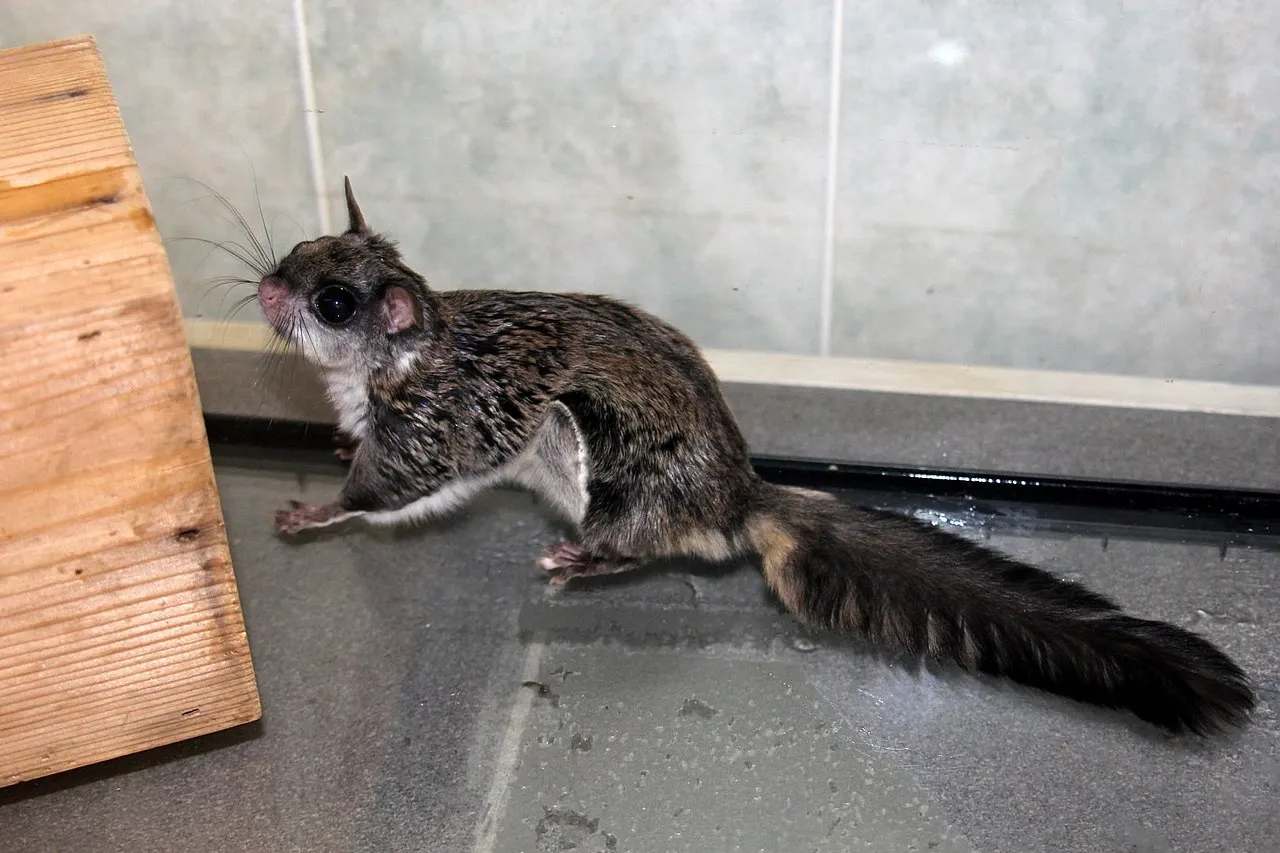
VIII. Test Your Understanding:
– A comprehensive examination of sugar gliders being marsupial mammals and flying squirrels being placental mammals reinforces the foundational knowledge needed to discern their evolutionary paths.
IX. Real-Life Experiences:
– Personal experiences shared on Quora provide insights into life with sugar gliders and flying squirrels as pets, shedding light on the unique challenges and joys associated with each.
X. Key Differences Guide:
– Summarizing the key differences between sugar gliders and flying squirrels in a comprehensive guide aids enthusiasts, researchers, and animal lovers in appreciating the diversity within the gliding mammal category.
*Details of Comparison: Sugar Glider Vs Flying Squirrel
| Criteria | Sugar Glider | Flying Squirrel |
| Taxonomy | Marsupial (Diprotodontia, Petauridae) |
Rodent (Rodentia, Sciuridae, Tribe: Pteromyini)
|
| Appearance and Adaptations | Gliding membrane, large eyes, insectivorous adaptations |
Gliding membrane, flattened tail, herbivorous adaptations
|
| Size | 9–12 inches (including tail) |
8–12 inches (including tail)
|
| Weight | 3–6 ounces | 2–5 ounces |
| Dentition and Bite Force (PSI) | Sharp incisors, insectivorous adaptations |
Sharp incisors, herbivorous adaptations
|
| Physical Offensive Advantages | Agility in tree canopies |
Gliding capabilities for offense
|
| Physical Defensive Advantages | Retreat to tree hollows |
Quick gliding for evasion
|
| Speed | Glides at 5–25 km/h (3–15 mph) |
Glides at 20–25 km/h (12–15 mph)
|
| Agility | Highly agile for arboreal navigation |
Highly agile for arboreal navigation
|
| Senses | Excellent night vision, keen sense of smell |
Keen sense of hearing, good sense of smell
|
| Overall Physical Capacity | Adapted for gliding, climbing, and navigating tree canopies |
Adapted for gliding, climbing, and navigating tree canopies
|
| Habitat Preference(s) and Geographic Region | Australia, New Guinea, Indonesia |
Global distribution in various forest types
|
| Tracks | Small with opposable toes |
Small with claw marks
|
| Lifespan | 5–7 years | 4–6 years |
| Mode of Feeding | Omnivorous | Herbivorous |
| Intelligence | Problem-solving abilities, social intelligence |
Cognitive skills for adaptation
|
| Social Behavior | Highly social |
Generally solitary
|
| Mode of Reproduction | Marsupial reproduction |
Placental mammal reproduction
|
| Parental Behavior | Maternal care with pouch |
Maternal care in nests
|
| Proximity to Human-Inhabited Areas | Adaptable to human-altered landscapes |
Adaptable to human-altered landscapes
|
| Behavior Toward Humans | Shy, may form bonds |
Generally avoid interaction
|
| Danger Posed to Humans | Generally not dangerous |
Generally not dangerous
|
| Associated Precautions | Requires more cautious handling |
Minimal precautions needed
|
| Conservation Status | Varies by species; not considered threatened |
Varies by species; some may face threats
|
Key Points:
- Sugar gliders are marsupials, while flying squirrels are rodents.
- Both have adaptations for gliding and play roles in seed dispersal and insect control.
- Sugar gliders are slightly larger and heavier on average.
- Sugar gliders have a more varied omnivorous diet, while flying squirrels are primarily herbivorous.
- Both species exhibit high agility and are well-adapted for arboreal life.
- Sugar gliders are more social, forming close-knit family groups, while flying squirrels are generally solitary.
- Conservation statuses vary by species within each group.
- Neither species poses significant dangers to humans, but precautions may be needed, especially with sugar gliders in captivity.
1. Taxonomy:
Sugar Glider (Petaurus breviceps):
Kingdom: Animalia
Phylum: Chordata
Class: Mammalia
Order: Diprotodontia
Family: Petauridae
Genus: Petaurus
Species: P. breviceps
Flying Squirrel (Sciuridae tribe Pteromyini):
Kingdom: Animalia
Phylum: Chordata
Class: Mammalia
Order: Rodentia
Family: Sciuridae
Tribe: Pteromyini
2. Appearance and Adaptations:
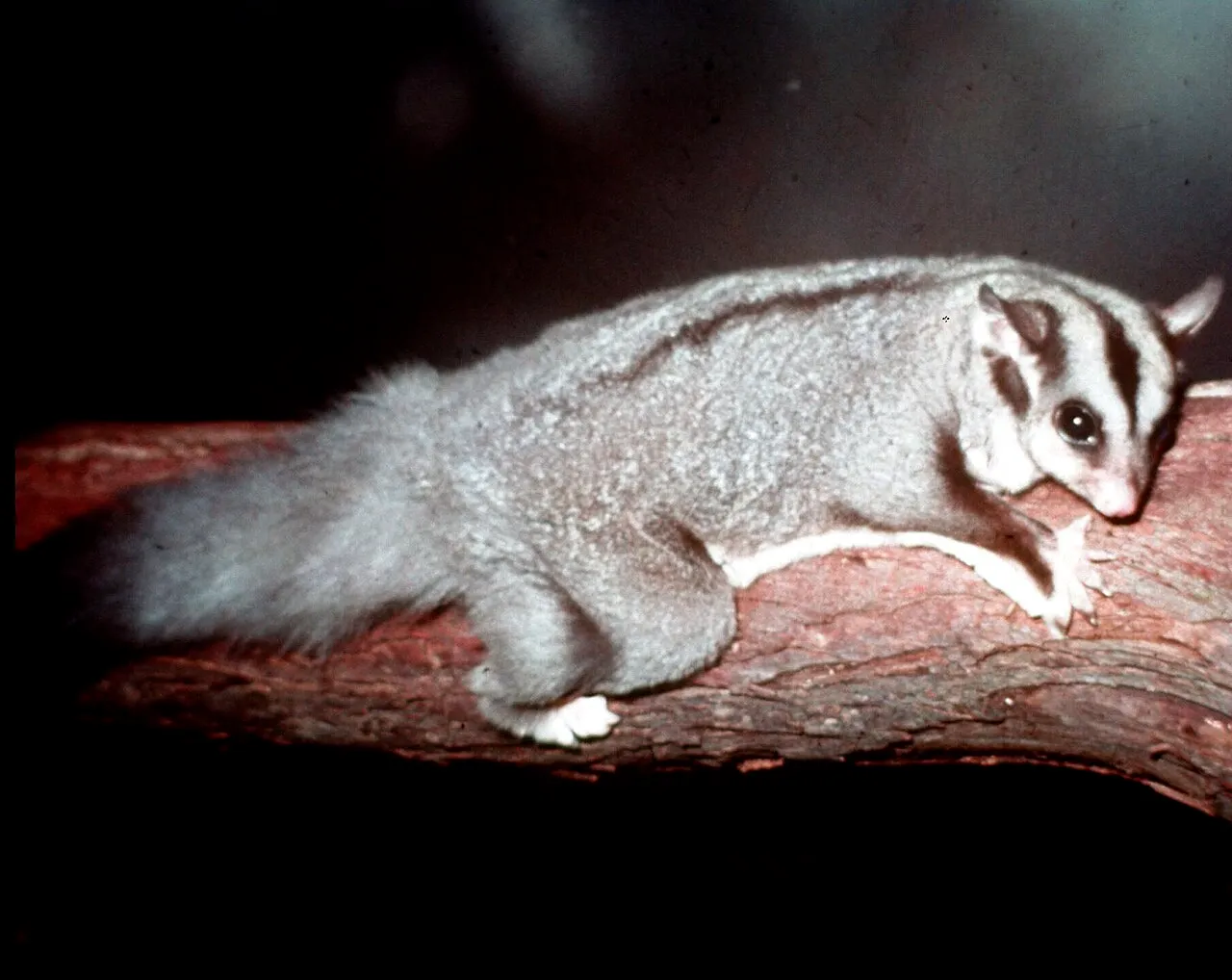
Sugar Glider:
Appearance: Small, nocturnal marsupials with a gliding membrane (patagium) between forelimbs and hindlimbs.
Adaptations: Large eyes for night vision, gliding membrane aids in arboreal movement and foraging.
Flying Squirrel:
Appearance: Small rodents with a patagium extending from wrists to ankles, allowing gliding.
Adaptations: Flattened tail for stability during glides, keen sense of hearing for nocturnal activities.
Comparison: Both possess adaptations for nocturnal gliding, but sugar gliders are marsupials, while flying squirrels are rodents.
Ecological Implications:
Sugar gliders and flying squirrels contribute to forest ecosystem dynamics through their roles as nocturnal foragers, aiding in seed dispersal.
3. Size:
Sugar Glider:
Length: 9–12 inches (including tail)
Flying Squirrel:
Length: 8–12 inches (including tail)
Comparison: Similar size ranges, with sugar gliders slightly longer on average.
Ecological Implications:
Size affects ecological niche and resource requirements, influencing interactions with other species and adaptation to specific habitats.
4. Weight:
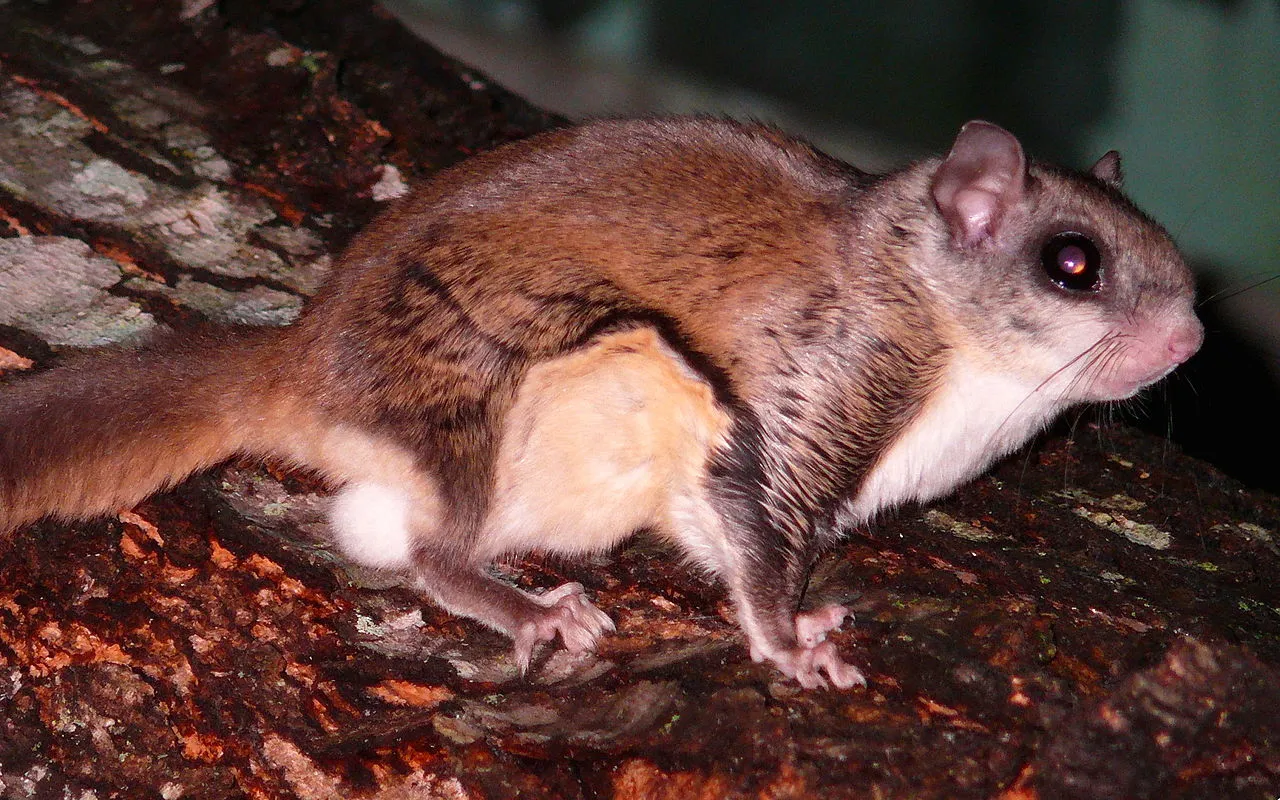
Sugar Glider:
Weight: 3–6 ounces
Flying Squirrel:
Weight: 2–5 ounces
Comparison: Sugar gliders tend to be slightly heavier than flying squirrels.
Ecological Implications:
Weight impacts energy expenditure, foraging patterns, and ability to navigate forest canopies, affecting overall ecological roles.
5. Dentition and Bite Force (PSI – Pounds per Square Inch):
Sugar Glider:
Dentition: Sharp upper and lower incisors, adapted for insectivorous diet.
Bite Force: PSI not well-documented.
Flying Squirrel:
Dentition: Rodent-like sharp incisors for gnawing on nuts and seeds.
Bite Force: PSI not well-documented.
Comparison: Both species have sharp incisors, but sugar gliders have adaptations for insectivorous feeding.
Ecological Implications:
Dentition influences dietary preferences and ecological roles in the ecosystem.
6. Physical Offensive Advantages:
Sugar Glider:
Quick and agile in tree canopies, allowing effective pursuit of prey.
Flying Squirrel:
Excellent gliding capabilities aid in approaching prey.
Comparison: While sugar gliders rely on agility, flying squirrels leverage gliding as an offensive advantage.
Ecological Implications:
These offensive traits impact their roles in maintaining insect populations and seed dispersal in their respective habitats.
7. Physical Defensive Advantages:
Sugar Glider:
Ability to retreat to tree hollows, using agility to escape predators.
Flying Squirrel:
Quick and evasive gliding helps escape from ground predators.
Comparison: Both species use their agility and environment to evade predators, but sugar gliders retreat to tree hollows.
Ecological Implications:
Defensive strategies influence population dynamics and predator-prey relationships in their ecosystems.
8. Speed (Km/hour or Mile/hour):
Sugar Glider:
Glides at an average speed of 5–25 km/h (3–15 mph).
Flying Squirrel:
Glides at an average speed of 20–25 km/h (12–15 mph).
Comparison: Flying squirrels generally glide at a faster speed compared to sugar gliders.
Ecological Implications:
Gliding speed affects foraging efficiency, predator evasion, and overall mobility in their habitats.
9. Agility:
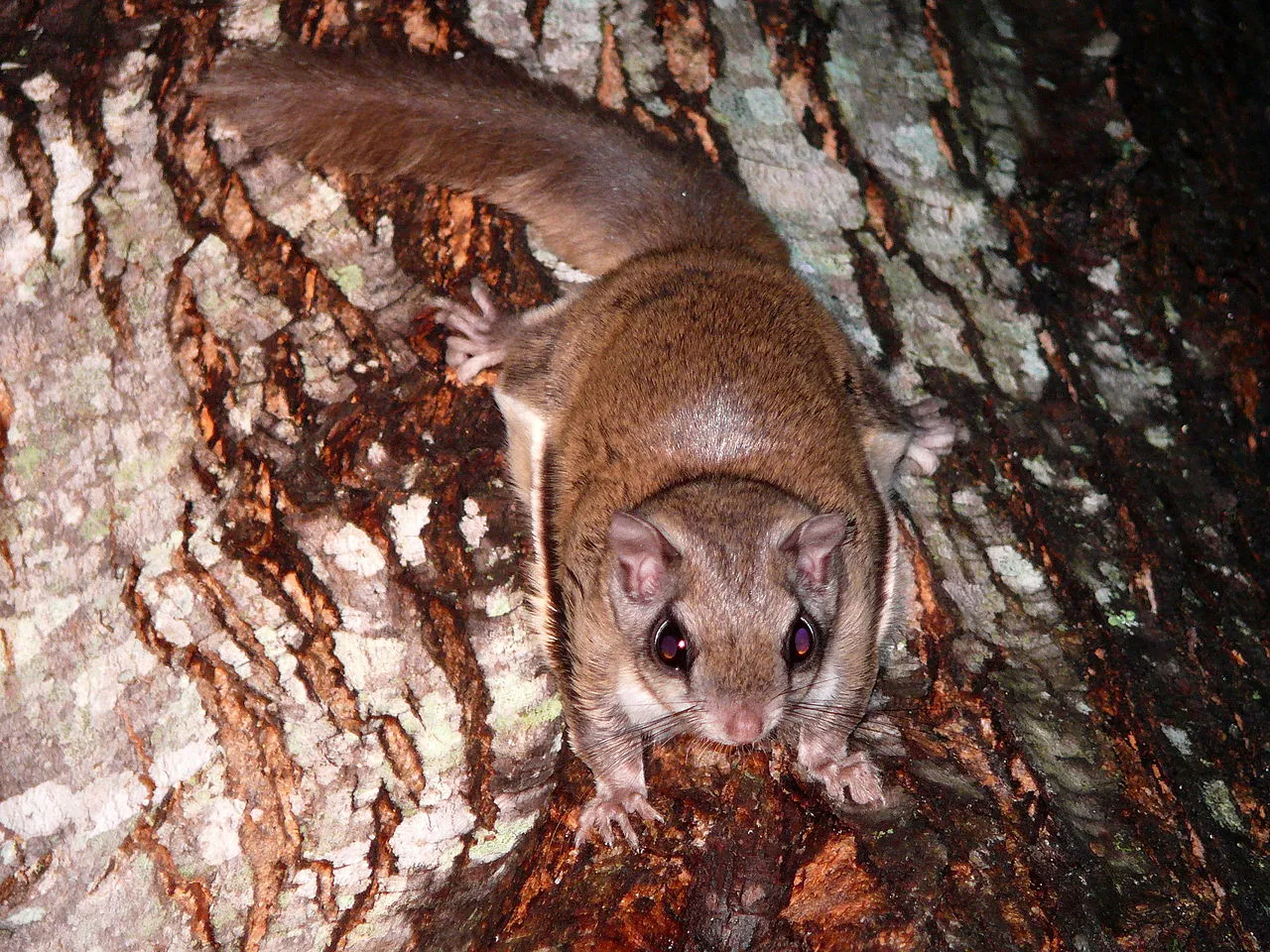
Sugar Glider:
Highly agile in tree canopies, navigating through branches with ease.
Flying Squirrel:
Agile in both trees and during gliding, using quick maneuvers.
Comparison: Both species exhibit high agility, crucial for navigating through complex forest environments.
Ecological Implications:
Agility influences feeding efficiency, predator evasion, and adaptation to varying forest structures.
10. Senses:
Sugar Glider:
Excellent night vision and a well-developed sense of smell.
Flying Squirrel:
Keen sense of hearing and a good sense of smell.
Comparison: While sugar gliders excel in night vision, flying squirrels rely on acute hearing.
Ecological Implications:
Varied senses contribute to their survival strategies, impacting foraging efficiency and predator detection in their habitats.
11. Overall Physical Capacity:
Sugar Glider:
Well-adapted for gliding, climbing, and navigating dense tree canopies.
Flying Squirrel:
Specialized for gliding and adept at moving through trees.
Comparison: Both species exhibit physical capacities suited for an arboreal lifestyle, with adaptations for gliding.
Ecological Implications:
Physical capabilities determine their roles in ecosystem processes, affecting habitat use and resource exploitation.
12. Habitat Preference(s) and Geographic Region:
Sugar Glider:
Prefer forested areas, found in Australia, New Guinea, and Indonesia.
Flying Squirrel:
Occupy various forest types, found in North America, Europe, Asia, and Africa.
Comparison: Sugar gliders are concentrated in the Australasian region, while flying squirrels have a more widespread distribution.
Ecological Implications:
Habitat preferences influence the ecosystems they inhabit, impacting local biodiversity and ecosystem dynamics.
13. Tracks:
Sugar Glider:
Small, distinctive footprints with opposable first and second toes.
Flying Squirrel:
Small tracks with characteristic claw marks from climbing.
Comparison: While both leave small tracks, sugar gliders have distinctive opposable toes, whereas flying squirrels leave claw marks.
Ecological Implications:
Tracking studies aid in understanding their movement patterns, behavior, and ecological roles in their habitats.
14. Lifespan:
Sugar Glider:
Typically 5 to 7 years in the wild.
Flying Squirrel:
Varies by species but generally around 4 to 6 years in the wild.
Comparison: Sugar gliders generally have a slightly longer lifespan than many flying squirrel species.
Ecological Implications:
Lifespan affects reproductive strategies, population dynamics, and ecological roles within their respective ecosystems.
15. Mode of Feeding:
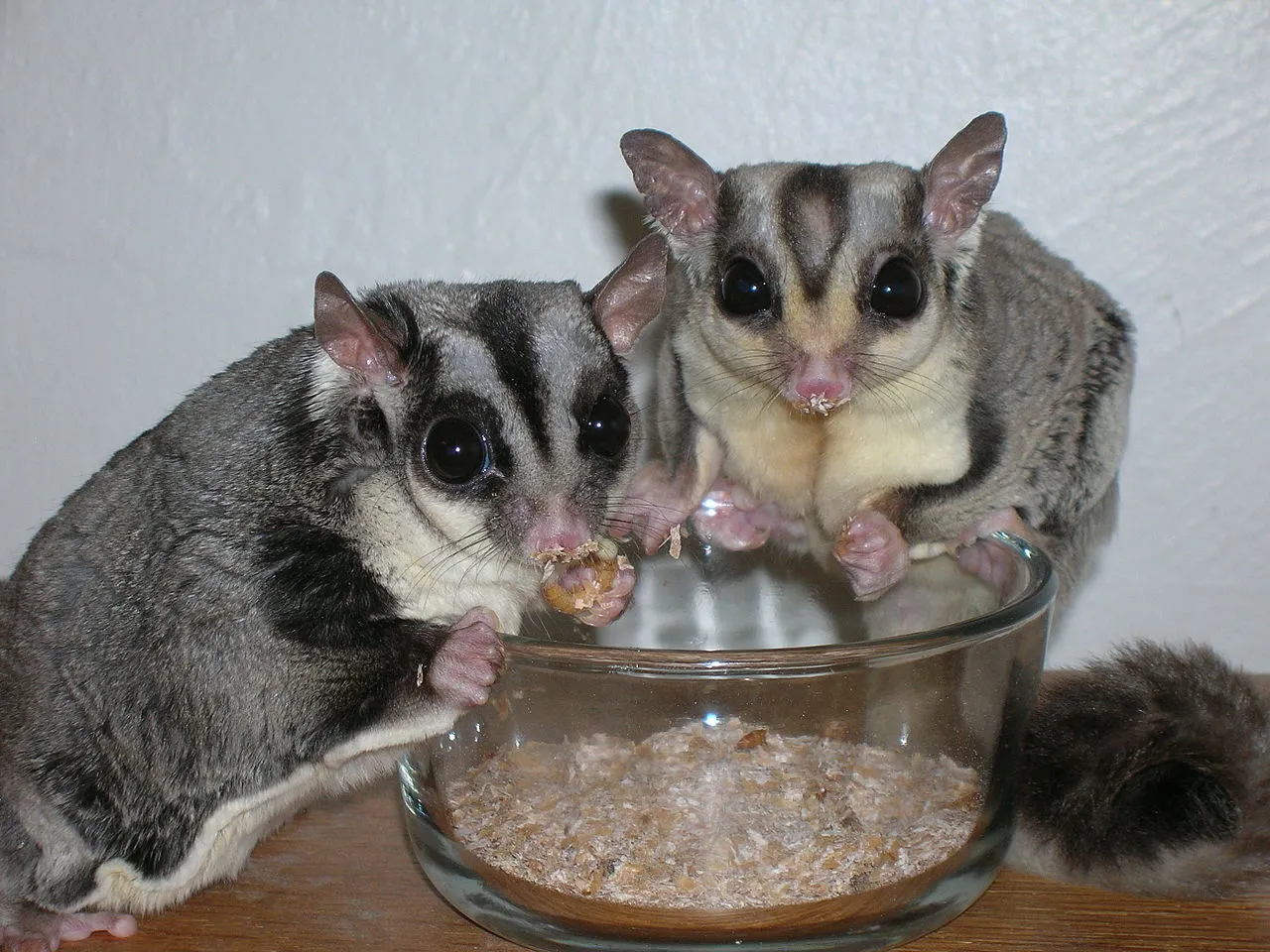
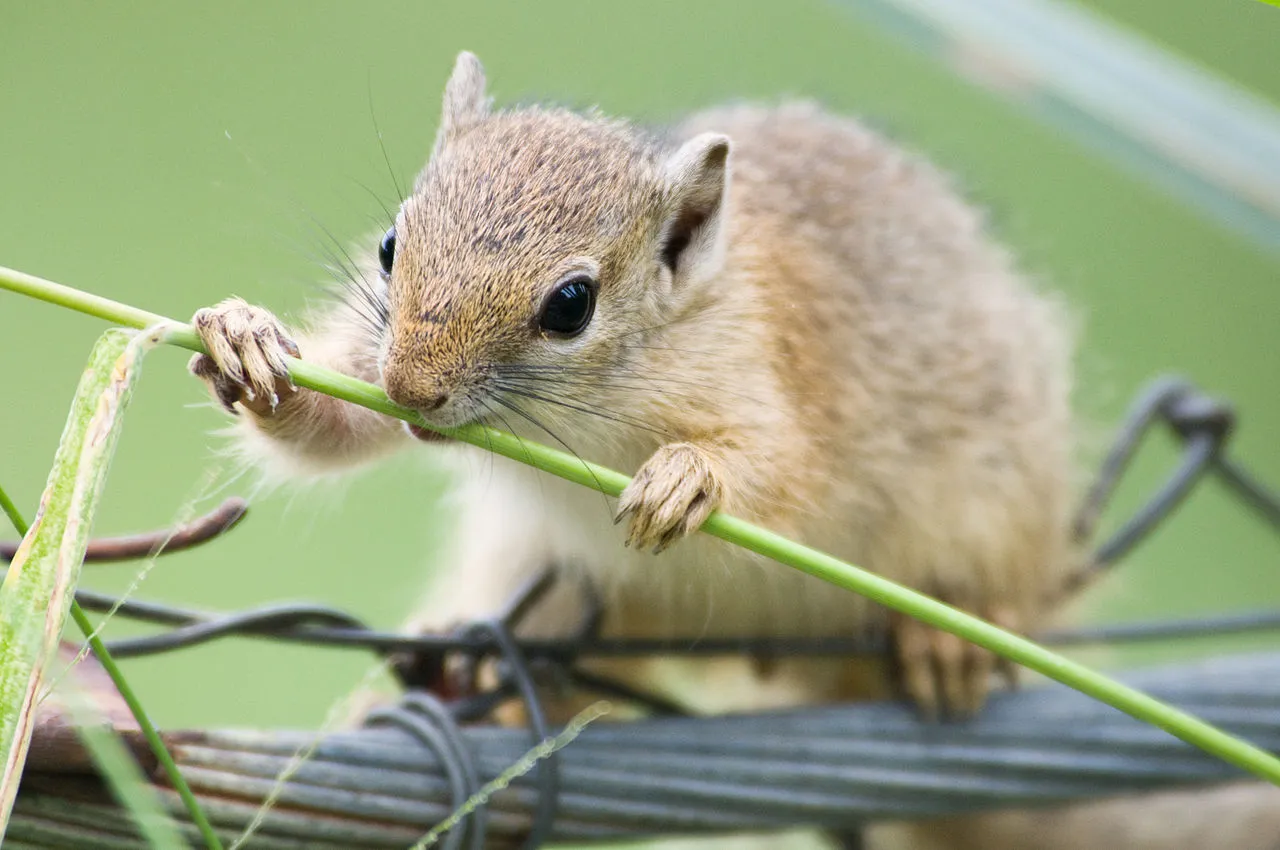
Sugar Glider:
Omnivorous, feeding on nectar, sap, fruits, insects, and small vertebrates.
Flying Squirrel:
Herbivorous, primarily consuming nuts, seeds, and fruits.
Comparison: Sugar gliders have a more varied diet, including both animal and plant matter, while flying squirrels are predominantly herbivores.
Ecological Implications:
Dietary preferences influence their impact on local flora and fauna, shaping their roles within the ecosystem.
16. Intelligence:
Sugar Glider:
Display problem-solving abilities and social intelligence.
Flying Squirrel:
Exhibit cognitive skills for food caching and navigating complex environments.
Comparison: Both species show intelligence in adapting to their environments, though the specific manifestations may differ.
Ecological Implications:
Intelligence impacts foraging efficiency, adaptability to environmental changes, and interactions with other species.
17. Social Behavior:
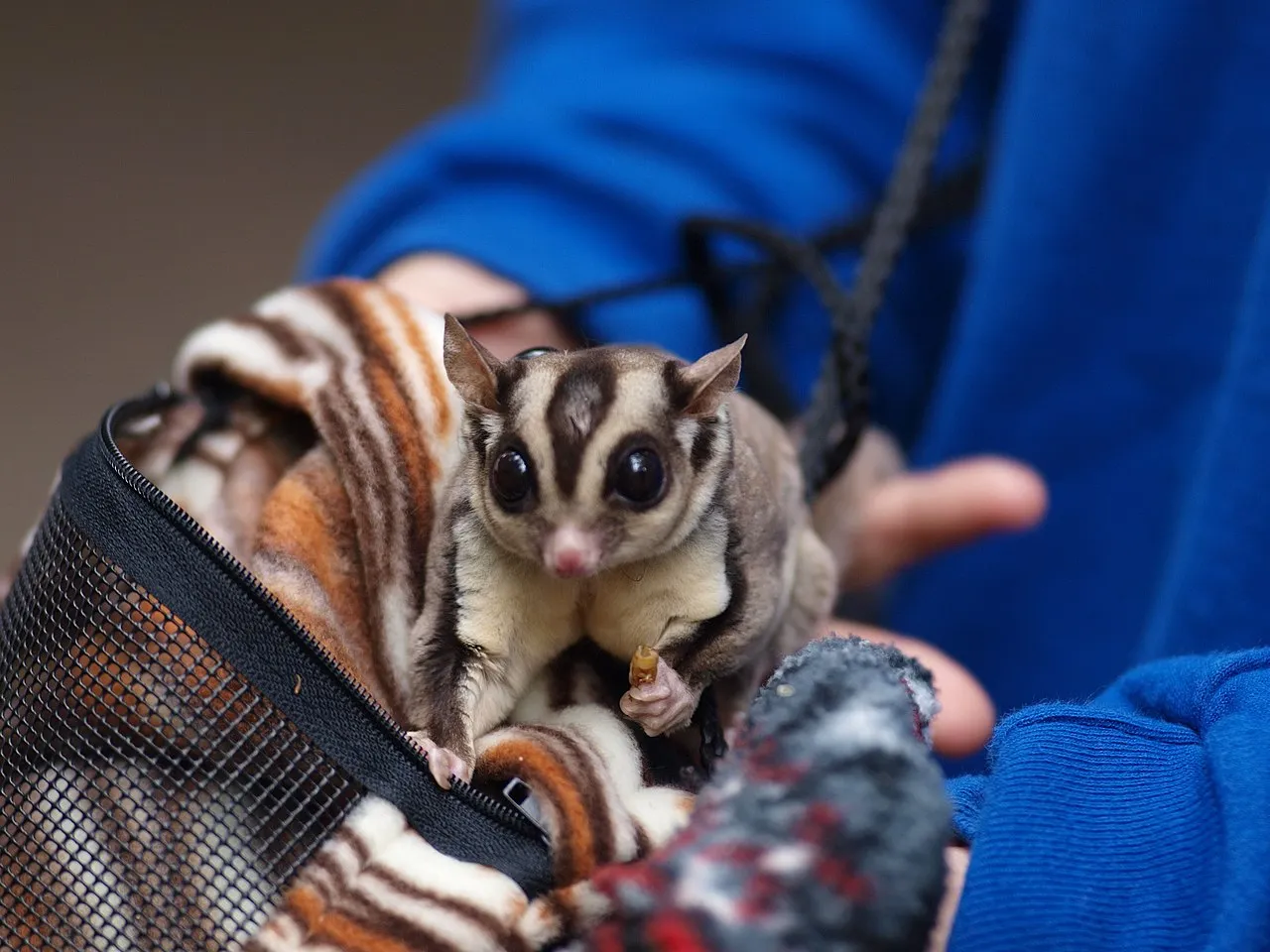
Sugar Glider:
Highly social, forming close-knit family groups.
Flying Squirrel:
Generally solitary, with some species showing social tendencies.
Comparison: Sugar gliders are more social, relying on group dynamics, whereas flying squirrels are often more solitary.
Ecological Implications:
Social behaviors influence population structures, communication, and cooperative activities within their ecosystems.
18. Mode of Reproduction:
Sugar Glider:
Marsupial reproduction with a short gestation period, followed by the development of young in a pouch.
Flying Squirrel:
Typical placental mammal reproduction with a longer gestation period.
Comparison: Sugar gliders exhibit marsupial reproductive characteristics, while flying squirrels follow a more typical placental mammal reproductive pattern.
Ecological Implications:
Reproductive strategies impact population dynamics, with marsupials often having shorter generation times.
19. Parental Behavior:
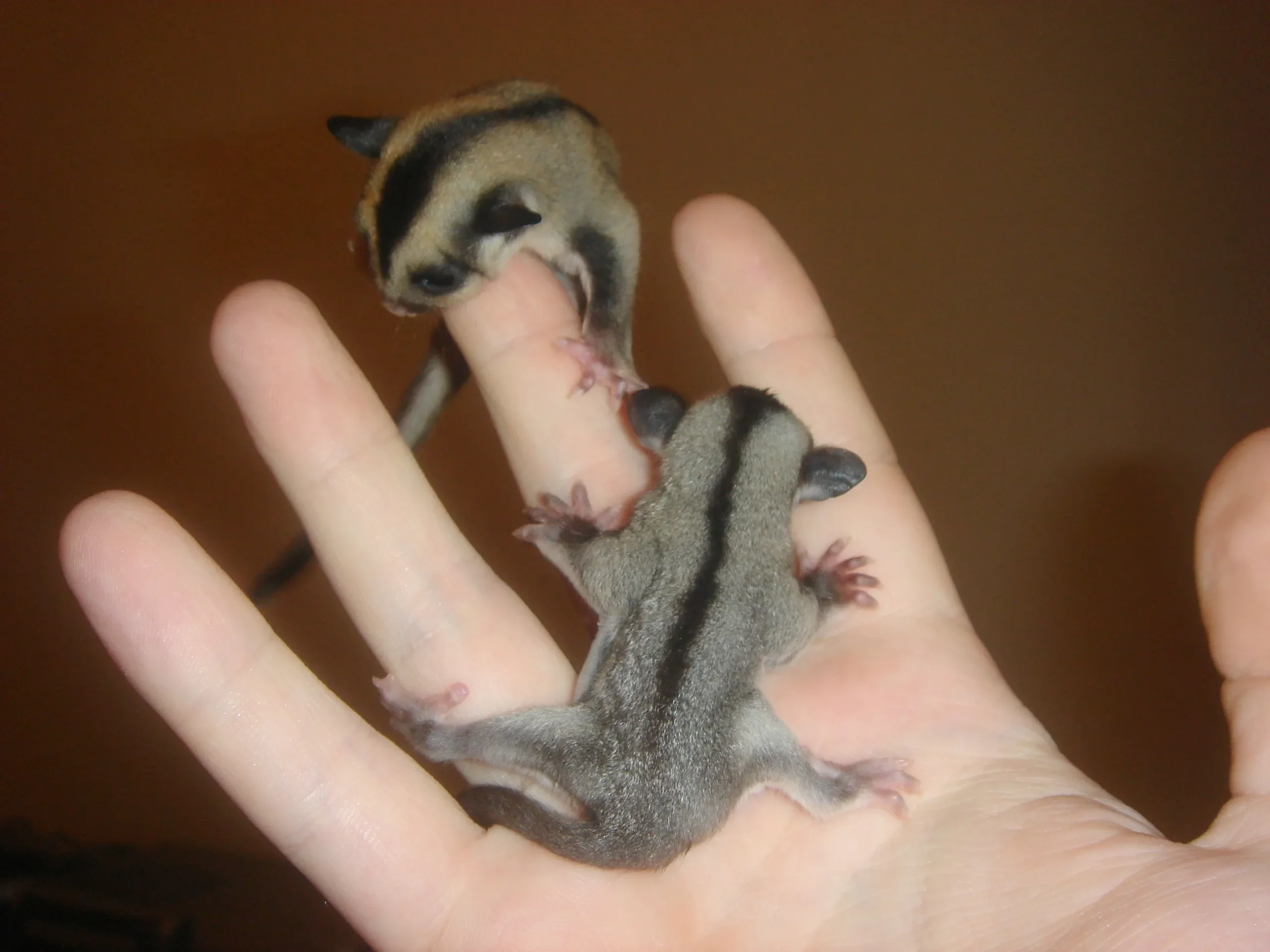
Sugar Glider:
Females carry and nurse their young in a pouch, displaying strong maternal care.
Flying Squirrel:
Mothers care for their offspring in nests, providing protection and nourishment.
Comparison: While both exhibit maternal care, sugar gliders carry and nurse young in a pouch, emphasizing a more direct form of care.
Ecological Implications:
Parental behaviors influence offspring survival rates and contribute to the overall reproductive success of each species.
20. Proximity to Human-Inhabited Areas:
Sugar Glider:
Found in forested areas near human settlements, adapting to suburban environments.
Flying Squirrel:
Some species adapt to suburban and urban areas, coexisting with humans.
Comparison: Both sugar gliders and certain flying squirrel species demonstrate adaptability to human-altered landscapes.
Ecological Implications:
Proximity to human-inhabited areas can impact their interactions with anthropogenic factors, such as habitat alteration and potential conflicts with humans.
21. Behavior Toward Humans:
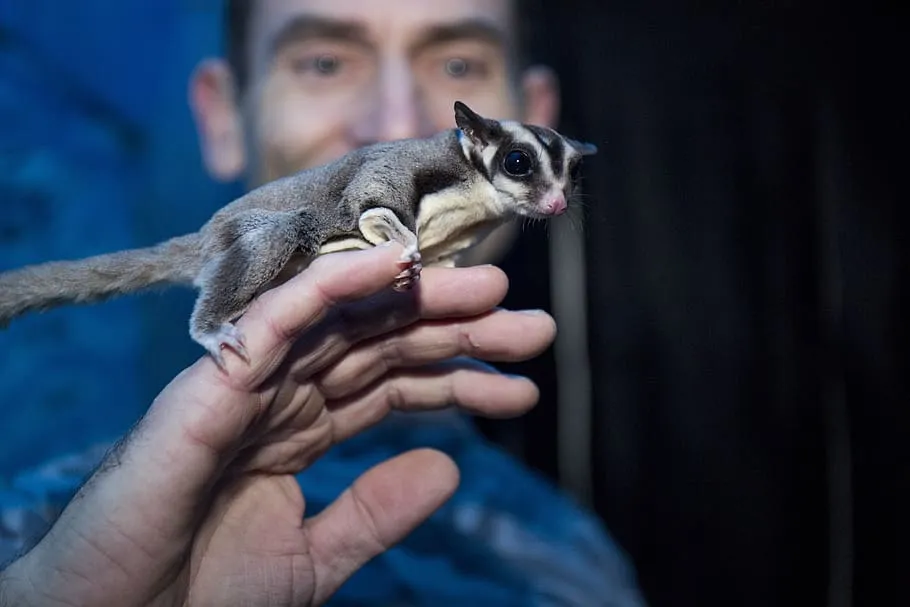
Sugar Glider:
Generally shy but can become accustomed to human presence, forming bonds in captivity.
Flying Squirrel:
Typically avoid human interaction but may adapt to human presence in certain situations.
Comparison: Both species can adapt to human presence, but sugar gliders are known to form closer bonds in captivity.
Ecological Implications:
Behavior toward humans can affect their susceptibility to human-induced threats, such as habitat destruction and interaction with domestic animals.
22. Danger Posed to Humans:
Sugar Glider:
Generally not dangerous to humans; can inflict minor bites if they feel threatened.
Flying Squirrel:
Generally not dangerous to humans; bites are rare and usually minor.
Comparison: Neither sugar gliders nor flying squirrels pose significant dangers to humans.
Ecological Implications:
Limited danger to humans reduces the likelihood of negative interactions and potential conflicts.
23. Associated Precautions:
Sugar Glider:
Caution needed to prevent bites; proper handling and care in captivity to ensure their well-being.
Flying Squirrel:
Minimal precautions needed; avoid provoking or stressing the animal.
Comparison: Sugar gliders require more cautious handling, especially in captivity, compared to flying squirrels.
Ecological Implications:
Human interactions, even in captivity, can impact the well-being of these animals, influencing conservation efforts.
24. Conservation Status:
Sugar Glider:
Generally not considered threatened; population status varies across different regions.
Flying Squirrel:
Conservation status varies by species; some are of least concern, while others may face threats.
Comparison: Conservation statuses depend on specific species within each group, with both having varying levels of concern.
Ecological Implications:
Conservation efforts are essential to maintaining biodiversity and ecosystem balance, addressing potential threats to these species.
*Summary of Comparison
Taxonomy:
Sugar gliders: Marsupials (Diprotodontia, Petauridae, Petaurus breviceps)
Flying squirrels: Rodents (Rodentia, Sciuridae, Tribe: Pteromyini)
Appearance and Adaptations:
Sugar gliders: Gliding membrane, large eyes, insectivorous adaptations
Flying squirrels: Gliding membrane, flattened tail, herbivorous adaptations
Size:
Sugar gliders: 9–12 inches (including tail)
Flying squirrels: 8–12 inches (including tail)
Weight:
Sugar gliders: 3–6 ounces
Flying squirrels: 2–5 ounces
Dentition and Bite Force (PSI):
Both have sharp incisors, with sugar gliders adapted for insectivorous feeding.
Physical Offensive Advantages:
Sugar gliders: Agility in tree canopies
Flying squirrels: Gliding capabilities for offense
Physical Defensive Advantages:
Sugar gliders: Retreat to tree hollows
Flying squirrels: Quick gliding for evasion
Speed:
Sugar gliders: Glides at 5–25 km/h (3–15 mph)
Flying squirrels: Glides at 20–25 km/h (12–15 mph)
Agility:
Both exhibit high agility for arboreal navigation.
Senses:
Sugar gliders: Excellent night vision, keen sense of smell
Flying squirrels: Keen sense of hearing, good sense of smell
Overall Physical Capacity:
Both adapted for gliding, climbing, and navigating tree canopies.
Habitat Preference(s) and Geographic Region:
Sugar gliders: Australia, New Guinea, Indonesia
Flying squirrels: Global distribution in various forest types
Tracks:
Sugar gliders: Small with opposable toes
Flying squirrels: Small with claw marks
Lifespan:
Sugar gliders: 5–7 years
Flying squirrels: 4–6 years
Mode of Feeding:
Sugar gliders: Omnivorous
Flying squirrels: Herbivorous
Intelligence:
Both show cognitive skills for adaptation.
Social Behavior:
Sugar gliders: Highly social
Flying squirrels: Generally solitary
Mode of Reproduction:
Sugar gliders: Marsupial reproduction
Flying squirrels: Placental mammal reproduction
Parental Behavior:
Sugar gliders: Maternal care with pouch
Flying squirrels: Maternal care in nests
Proximity to Human-Inhabited Areas:
Both can adapt to human-altered landscapes.
Behavior Toward Humans:
Sugar gliders: Shy, may form bonds
Flying squirrels: Generally avoid interaction
Danger Posed to Humans:
Neither pose significant dangers.
Associated Precautions:
Sugar gliders require more cautious handling.
Conservation Status:
Both have varying conservation statuses by species.
Conclusion
I. Similarities:
Both sugar gliders and flying squirrels are arboreal, nocturnal mammals with adaptations for gliding.
They play roles in seed dispersal and insect control within their respective ecosystems.
II. Differences:
– Sugar gliders are marsupials, while flying squirrels are placental mammals. – Sugar gliders are more social, whereas flying squirrels are often solitary or less social. – Conservation statuses and potential threats vary among different species within each group.
